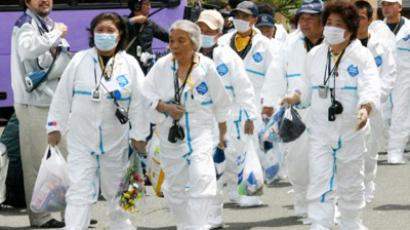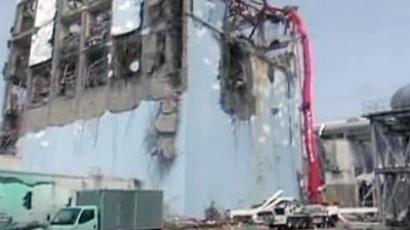Fukushima in meltdown before tsunami hit
Workers at Japan's Fukushima plant say the ground under the facility is cracking and radioactive steam is escaping through the fissures. They also say pipes and at least one reactor were seriously damaged before the tsunami hit the area in March.
The allegations raise concerns that the facility was doomed even before the earthquake triggered the disaster. Problems with deteriorating pipes at the plant had been reported for years. The cooling system failed to stop reactors going into meltdown after it was hit by the 40-metre-high waves. The plant has been leaking radioactive material ever since, despite efforts to clean it up.Robert Jacobs of the Hiroshima Peace Institute says that the evidence calls into question Japan's nuclear safety.“There’s certainly a great deal of evidence that appears to suggest that the first reactor, reactor number one, was melting down by the time the tsunami hit,” he told RT. “So, if that’s the case that the reactor was melting down as a result of the earthquake, and not as a result of the tsunami, a nine-point earthquake is something that has the potential to happen throughout Japan, and that would put the reliability and the design safety of all of these reactors in question,” he said.Reports of decreasing levels of radiation at the facility, Dr. Jacobs went on to explain, are no reason for optimism. It is more likely to mean that the radioactive material is moving away, making its way through the building structures:“When you have a fragile structure that’s already suffered a great deal of damage and when you have continual aftershocks at the level of six-point, or there’s been some even higher, what we have now is we have the radioactive core that has melted down into the basement, into the bottom of the containment vessel of these reactors, and if the radiation level is going down, where it’s been monitored inside the buildings, and if the water pressure is going down, and the temperature is going down, it’s not that the radiation is just suddenly going away, it means that the radioactive material, the melted core, is simply moving further away from where it’s been measured,” he explained.The scientist also pointed out that earthquakes are never single events, even when they occur at a high level, and engineers who designed the Fukushima power plant failed to take this into account.“We are seeing now that these reactors were not safe for earthquakes, let alone for tsunamis,” Robert Jacobs concluded.
Christopher Busby, a professor with the European Committee on Radiation Risks, believes that the world still does not know the true extent of the nuclear crisis in Japan.“I’ve actually visited there and I’ve taken quite sophisticated radiation measuring equipment,” Busby said. “The concentrations of the radio nuclides on the ground – even as far as 100 and more kilometers away from the plant – are very much higher than they have been saying…. The concentrations of Cesium 137 – for example, in [car] filters – is more than 100,000 times higher in terms of air concentration than the air concentration at the peak of the weapons fallout in 1963. So we are talking about serious levels of radioactive nuclides. And the fact is that it is effectively being ignored by the authorities, [who are] concentrating on the external dose rates.”“We found one sample in Tokyo that had levels of radioactivity higher than levels in the Chernobyl exclusion zone,” he added.














